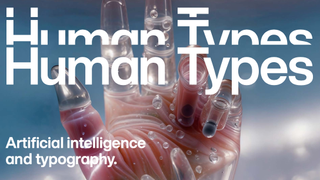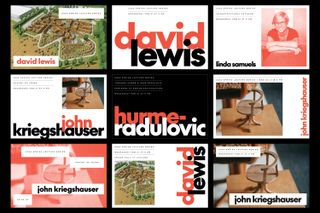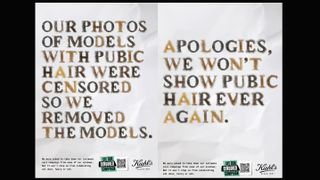Should you ditch Times New Roman for your résumé?
A curriculum vitae expert has announced that the wrong font could compromise your career - Christopher Phin has his say.
This week, Bloomberg investigated the best and worst typefaces to use on your résumé. According to CV expert Mildred Talabi – and before we go any further, can we take a moment to give thanks that neither my nor your lives have reached a point where that's our job title – you shouldn't use Times New Roman on your résumé. Instead, you should use Verdana, Calibri, Century Gothic or Tahoma, apparently because they are "cleaner, fresher, modern".
Well I don't care what font you set this in: bugger that.
I mean, the basic point Talabi is making is fine. She's essentially saying Times New Roman makes it look like you haven't updated your CV for a decade, and while I think her comments belie a fundamental misunderstanding of typography and design, the underlying message that a CV should be fresh and evidently laboured-over is a valid and important one.
The 100 best free fonts for any project
What's more, she's probably thinking of the kind of soulless, templated, death-by-Word CVs that are the norm outside our happy, vibrant world of design. Many creative professionals will never even have to write a CV, but I can't imagine any that do will sit down in front of a PC, Google 'CV templates' and then fill their details into the .doc they download.
Hell, the first thing most designers would do is spend half an hour setting their full name in all the different bloody fonts installed on their computer. And then Googling for more. And then manually tweaking the kerning on their 10 favourites.
I'm wary, though, of the kind of blanket, pat, tweet-length advice like 'never use Times New Roman on your CV'. Times in and of itself is a perfectly good font, and is arguably a strong choice for a professional CV where you want quietly to summarise your suitability for a serious role. Used well – and there's the rub, I know – it can communicate a kind of sober responsibility and understated British classiness that might be entirely appropriate for a CV.
Arial too, which also draws her ire, might be a good, conscious choice; I know we like to hate on Arial, but it's fine. Yes, Helvetica has nicer letter forms, but you only really see them at big point sizes; since Arial is metrically identical to Helvetica, body text set in one is functionally identical to the other.

More worrying still, though, is not just Talabi's advice that just by substituting Times for a different font, you magically transform your CV into something clean, fresh and modern, but specifically the fonts she suggests. Verdana was terrific on-screen, especially in the days before antialiasing, but it's plug-ugly when printed. Calibri is an anodyne apology of a font that makes everything look like a corporate report from a marketing slide for Microsoft Office.
Century Gothic should never be used for anything other than setting the names of provincial hairdressers; it's especially bad for body text, where its artificial, geometric forms make it hard to read, and where its wide glyphs mean you can't fit much copy into a given space – particularly important on a CV.
Tahoma, that horizontally compressed rehash of Verdana? Meh, it's fine. But hardly a panacea.
Look, I know we're just taking the bait. I know that i100.co.uk is just trying to generate some Buzzfeed-style viral content with a nice, snappy headline which they must know will get designers and font nerds spitting their single-origin Ecuadorian flat whites all over their MacBooks. It's just bad, bland, unconsidered advice, though, and maybe now the next time you see one of your friends linking to that piece on Facebook or Twitter, you can reply with a link to this rather than having to take the time to explain yourself why it's wrong.
Words: Christopher Phin
Christopher Phin writes about retro Apple tech for Macworld, typography and design for us, and pretty much anything else if someone pays him. Follow him at @chrisphin.
Liked this? Try these...

Thank you for reading 5 articles this month* Join now for unlimited access
Enjoy your first month for just £1 / $1 / €1
*Read 5 free articles per month without a subscription

Join now for unlimited access
Try first month for just £1 / $1 / €1
Get the Creative Bloq Newsletter
Daily design news, reviews, how-tos and more, as picked by the editors.
The Creative Bloq team is made up of a group of design fans, and has changed and evolved since Creative Bloq began back in 2012. The current website team consists of eight full-time members of staff: Editor Georgia Coggan, Deputy Editor Rosie Hilder, Ecommerce Editor Beren Neale, Senior News Editor Daniel Piper, Editor, Digital Art and 3D Ian Dean, Tech Reviews Editor Erlingur Einarsson and Ecommerce Writer Beth Nicholls and Staff Writer Natalie Fear, as well as a roster of freelancers from around the world. The 3D World and ImagineFX magazine teams also pitch in, ensuring that content from 3D World and ImagineFX is represented on Creative Bloq.




